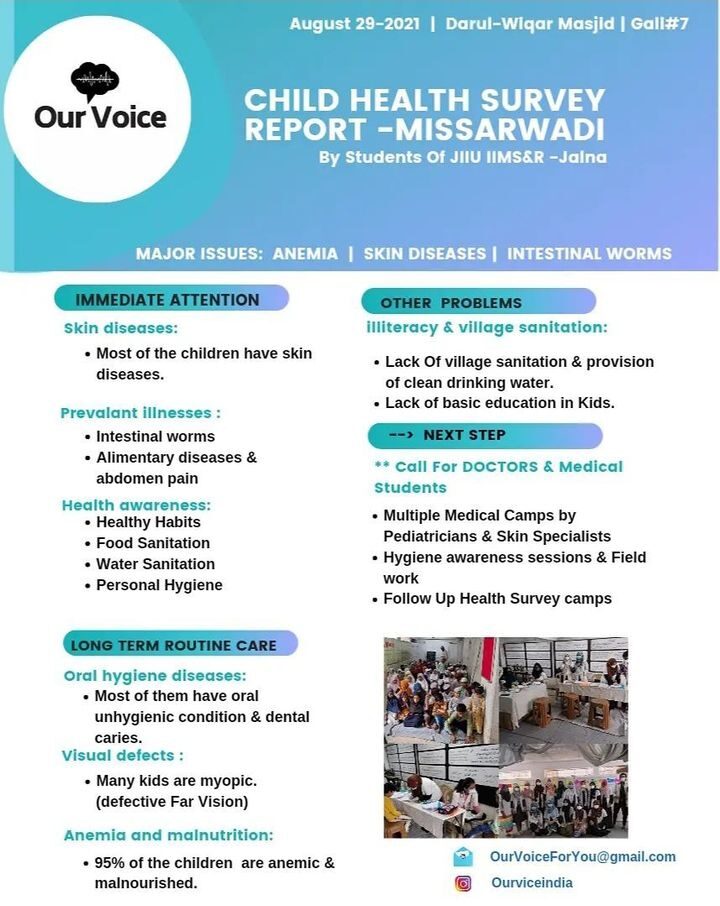CHILD HEALTH SURVEY - 2021
Introduction:
Medical students often participate in various community outreach programs, including research projects aimed at improving the health and well-being of underserved populations. One such initiative is conducting research in Misserwadi to analyze the health status of the residents of Misserwadi and provide assistance to doctors for further treatment. This report aims to provide a detailed description of this yearly activity.
Background:
Slum areas are often characterized by poor living conditions, including inadequate housing, poor sanitation, and limited access to healthcare services. Misserwadi is one such area in Aurangabad. Residents of Misserwadi are vulnerable to various health problems, including infectious diseases, malnutrition, and mental health disorders. Conducting research here can help identify the underlying health issues and provide insights into potential solutions to improve the health status of the residents.
Methodology:
This research project involved a team of 20 medical students who visited Misserwadi in April 2021 as a part of our ANNUAL SURVEY PROGRAM to conduct a health survey of the residents. The survey included a questionnaire that covered various aspects of health of children. The questionnaire was structures using previously designed and validated questions. It covered all facets of child health (age group 3-15 years). The team also conducted physical examination of the children.
The data collected from the survey was analyzed to identify the prevalent health issues in the slum area. The findings are then shared with local doctors and healthcare workers who provide care to the children and residents. The medical students also assist the doctors in providing further treatment to the children including administering vaccinations and providing basic medical care.
Results:
The most prevalent health issues in the slum areas include malnutrition, infectious diseases, diarrhea, eye problems, dental caries and mental health disorders such as depression and anxiety, bad hygiene habits etc. The research project has also been successful in identifying gaps in healthcare services in the slum areas. The findings have helped local healthcare providers improve their services to better meet the needs of the children. For example, the project has led to the establishment of local clinics that provide basic medical care to residents who are unable to access healthcare services due to their location or financial constraints.
Conclusion:
The research project conducted by medical students in slum areas has been a valuable initiative to improve the health status of underserved populations of Misserwadi. The project has identified prevalent health issues and helped local healthcare providers improve their services to better meet the needs of the residents. The project also provides an opportunity for medical students to gain practical experience and develop their skills in community outreach and research

